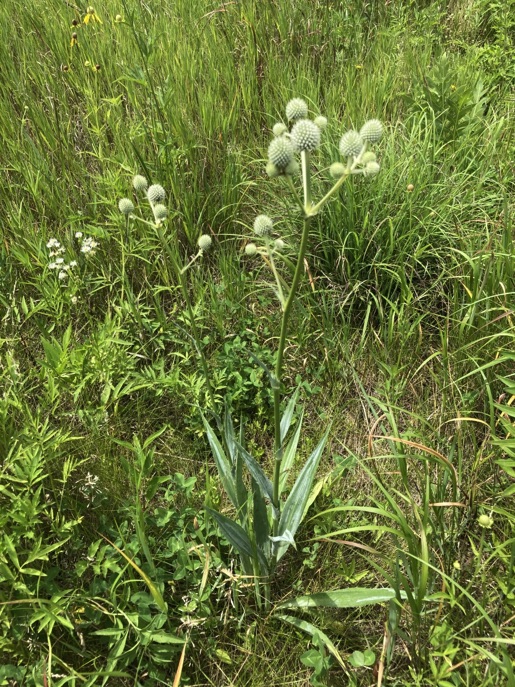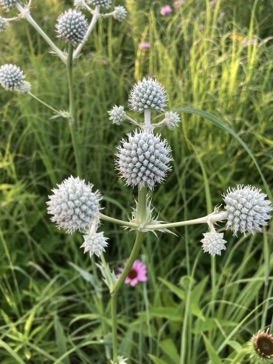Rattlesnake-Master
Eryngium yuccifolium

Unmistakable with its spiny white flowering heads, this native prairie species was once thought- -erroneously--to provide an antidote to rattlesnake bites, hence the name. The leaves are long (up to 2 feet), narrow, pointed, amd parallel-veined, and have spiny edges resembling those of Yucca (hence the Latin name), and are often a grayish or bluish green. From the taproot and basal leaves rises a single stocky stem which branches near the top to support a number of spherical flower heads; the actual flowers are white or greenish, small, and protected by spines. The flowering heads may also have a bluish cast. Despite their forbidding appearance, they are visited by many insects. Over the years the root establishes side shoots so that clusters of several plants are common.
2-4 feet, sun.
Summer (July-August).
18 July 2020.
Rattlesnake-Master, 12 July 2020.
